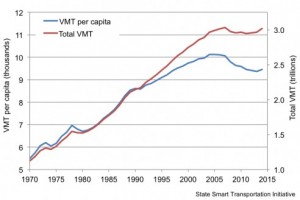[ update early 2015; There are two discrepencies compared to the Crash Facts (which is still reporting 30 bicyclist fatalities at the time of this writing in Feb 2015); This will probably not be reconciled until the final FARS for 2013 is released, typically in very late 2015. I have noted them both on the 2013 fatality grid (follow for links to news reports). Both occurred in Lake Havasu City; which is a very peculiar. The first “missing” fatal occurred on 3/6/2013 and is present in FARS, but not asdm. This may be related to a 3/11 fatality, also in Lake Havasu City which is in both FARS and asdm.
I found a second discrepancy while googling around to find info about the 3/6/2013 fatal; so according to that there was a bicyclist fatality in the wee hours of 7/29/2013 involving a dui motorist. there’s all sorts of news coverage, the victim’s mother is on LHC city council. The driver quickly plead guilty to manslaughter and was sentenced. THIS IS NOT IN EITHER THE ASDM OR FARS!?
Also note that as of the time of this writing (early 2015) the so-called “final” FARS for 2013 hasn’t been released yet — it normally comes out in December (of 2015, for 2013). And I only have visibility into the asdm data that adot puts out on a dvd issued in June (of 2014 for the year 2013 crashes)]
Adot has released Crash Facts 2013 in early June, as usual/expected. The graphical crash map has been updated. The overall figures were relatively flat, the overall numbers of MV crashes of all types (all figures are year-over-year; 2012 vs. 2013):
- number of MV crashes: 103,909 vs. 107,348 up 3.31%
- all Fatalities: 821 vs. 844. up 2.80%
- Total Injuries: 50,051 vs. 50,284 almost flat at up 0.47%
The two most closely-watched traffic safety metrics, the number of fatalities per 100M Vehicle Miles Traveled (VMT), and per 100K population are not yet available but will remain ~ 20% worse for Arizonans than for the US overall.
The results for cyclists were somewhat mixed —
- the number of bike-MV crashes: 2,149 vs. 2,039. down 5%
- number of cyclists injured: 1,766 vs. 1,679 down 5%
- The number of fatalities at 30 was far higher than the last year’s 18 — the average yearly toll has been about 24; 30 is atypically high and 18 was atypically low. Fatalities, being relatively rare, have quite wide variation, making it hard to discern trends. For example in the most recent 10 year period there have been as many as 36 (in 2005) and as few as 18 (last year).
Longer term trends
I have a spreadsheet that tracks # of cyclist injuries and fatalities for 2001-2013. The number of cyclists injured this past year, 1,679, is almost exactly at the 13-year average of 1,655; and hasn’t much varied in 13 years. We still have no good exposure data; though we can say in that time, the population of AZ has grown 24% and driving has increased 19%. AzStats.xls (current as of 2014 data) or on google drive (the google drive version is quite possibly out of date).
Every Bicyclist Counts
I have been critical of the way the data from a recent LAB report, Every Bicyclist Counts, has been used. There is one issue, however where I am in complete agreement with LAB. The EBC used media reports and word-of-mouth to compile a list — much the same way as I do for Arizona; as of today, I am only aware of 12 Arizona bicyclist fatalities for 2013; but I now know there have been 30, so the majority are “missing”(!). You can view the list of Arizona cyclists killed since 2009 at that same link — if you have any further information; please pass it along. For years before 2013 the list is complete; but some victims are just placeholders, known to me only because of the crash databases.
Why are there such large gaps in media coverage?
ASDM
The Arizona/Adot Safety Data Mart database (which is what i call it; i’m not sure if the CD adot sells for $15+2 is identical to that or not, but it is apparently pretty close). The CD became available mid-June on schedule and is all loaded up.
Below are some queries that match exactly “Crash Facts” for cyclists crashes/people injured, e.g. in 2013 (see chart on p.41).
Note that injury=2,3 or 4 counts Possible Injury, Injury, and incapacitating injury. The other choices are 1=No injury, 5=fatality, and (in the person table only) 99=Unknown, and somehow the unknowns always end up being no injury according to the incident table. (On spreadsheet AZstats.xls there’s a worksheet from Mike S that tallies numbers for cyclists and peds back to 2001). To count number of cyclist crashes and people, respectively:
SELECT eInjurySeverity,count(1) FROM 2013_incident i WHERE EXISTS (SELECT 1 FROM 2013_person p WHERE p.IncidentID=i.IncidentID AND p.ePersonType IN ('PEDALCYCLIST')) GROUP BY 1 ;
SELECT eInjuryStatus, count(1) from 2013_person where PersonType=3 group by 1;
Results for 2013: 2039, and 2071
To count number cyclist crashes w/injury, and number of injured cyclists:
SELECT count(1) FROM 2013_incident i WHERE EXISTS (SELECT 1 FROM 2013_person p WHERE p.IncidentID=i.IncidentID AND p.ePersonType IN ('PEDALCYCLIST')) AND InjurySeverity IN (2,3,4);
SELECT count(*) from 2013_person where ePersonType LIKE 'PEDAL%' AND InjuryStatus IN (2,3,4) ;
results for 2013: 1669 and 1679
Brief Remarks on 2014 Crash Facts
From Page 1 of 2014 Crash Facts; of the 884 total persons killed in Arizona traffic crashes:
- Motorists: 589 (= 425 drivers + 164 passengers)
- Pedestrians: 157
- Pedalcyclists: 28
.


